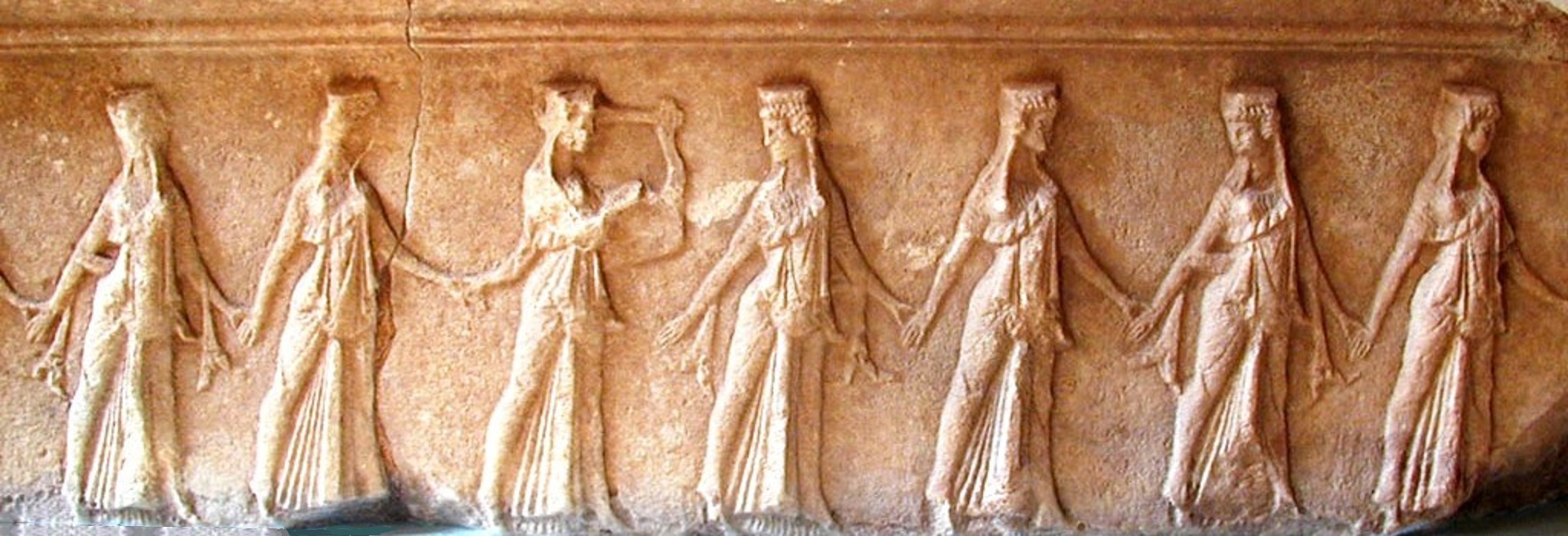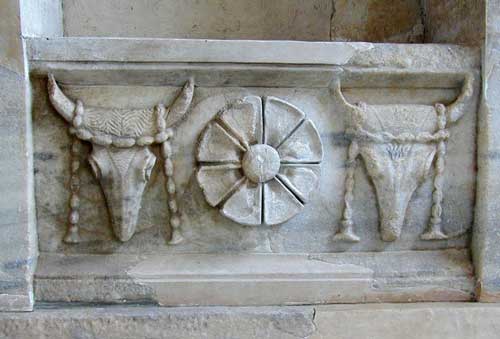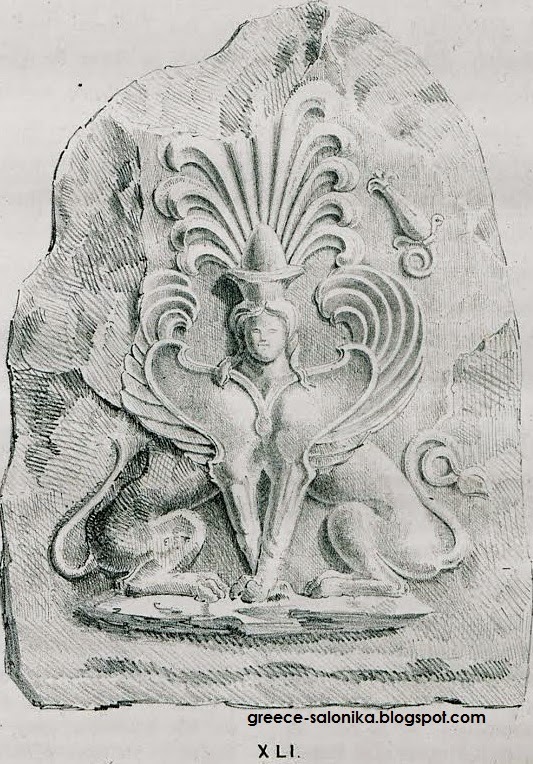Taphoi wrote:
If most examples of a sculptural feature are Roman, that doesn't mean the feature is Roman. Most Classical and Hellenistic sculptures only exist through Roman copies, the Met-Hermitage Dionysus being a case in point.
The frieze that you've posted is from the Temenos, dating from 340-317BC. It is part of major additions to the sanctuary between those dates. This could well represent patronage from the Macedonian Royal Family, so the frieze could easily commemorate a visit by Olympias and her Klodones.
Ah, yes, surely royal patronage by Philip, but I think nothing to do with Olympias. I don't want to dismiss the romanticising of Plutarch's tale of the meeting of Philip and Olympias at Samothrace, but I do consider it very unlikely that Philip would commemorate such a meeting in this manner. All the buildings at Samothrace are inclusive to the Mysteries performed there and are concerned with afterlife experiences and chthonic worship. One wouldn't want to insert allusions to one's wife into that, methinks. Also, there is mention in the article that the dancing on the frieze is too controlled to represent any form of bacchic worship. (The dancers at Vergina with their legs exposed are a good example, I think, of probable bacchic dance.)
Anyway, thank you for the info on the Temenos (I hadn't had a chance to do any serious research myself). I did follow up, however, and found something quite interesting in an article in SAMOTHRACIAN CONNECTIONS: Essays in honor of James R. McCredie. Edited by Olga Palagia and Bonna D. Wescoa. The article in particular is by Clemente Marconi
Choroi, Theōriai and International Ambitions: The Hall of Choral Dancers and its Frieze.
A relevant clip:
The case of Delos, and the fact that theōriai to sanctuaries were often accompanied by song and dance performances, may illuminate not only the nature, but also the significance of the representation on our frieze. By showing a plurality of choroi, the frieze could simultaneously allude to the splendor of the annual summer festival and reflect the ambition of the sanctuary, in the second half of the 4th century, to achieve international status. In Samothrace 5, Phyllis Lehmann suggested that our building was donated by Philip II, an attribution that has been followed by all subsequent literature. This is certainly a possibility, in consideration of the archaeological dating of the building to the third quarter of the 4th century. Be that as it may, thanks to the literary and epigraphical sources, and to the later dedications in the sanctuary, the big picture is clear. There is general agreement that the Macedonian royal family was the driving force behind the advent of monumental architecture at this sanctuary, and that the rationale for that involvement was the effort by Philip II to raise the status of “his” sanctuary in northern Greece to a level comparable to that of international sanctuaries such as Delphi and Olympia.
It has also been suggested that the king may have been responsible for the institution of the annual summer festival or for its substantial renovation. If this were the framework, then the Hall of Choral Dancers, a large, ceremonial building lying at the heart of the sanctuary, would be the first concrete manifestation of the ambition of the patrons of the sanctuary to raise its status to international level. In addition, the long frieze featuring choral dances should be seen as an allusion to the spectacle of the annual summer festival, to theōriai, and to the wide recognition of the prestige of the Sanctuary since early times – a fact pointed out centuries later by Diodoros – as suggested by the archaistic style of the sculpture. In the third quarter of the 4th century, this recognition at the international level was still an ambition. However, as the theōroi inscriptions indicate, by the middle of the 3rd century the importance of Samothrace had been acknowledged throughout the Aegean and sacred delegations came from the west coast of Asia Minor and from several islands to visit the sanctuary, admire its spectacular buildings, and, it seems, its choral dances.
And another, earlier, interesting part on the headgear of the women in the frieze (and our caryatids?):
However, the poloi of the young women on the frieze, besides emphasizing – as noted by Evelyn Harrison – the ceremonial character of their costume, also characterize their dances as choral executions performed in the context of the cult of a goddess. In the literature on the frieze, the headgear of the dancers has generally been identfied as a polos, and rightly so. Our dancers wear low, slightly flaring poloi. Poloi could be very tall, but sometimes they could be just a few centimeters high. The low polos was already in use during the Archaic period but became particularly popular in the 5th century, and it is often seen in 4th century art. The best comparison for the low, slightly flaring Polos of our dancers is that worn by Hera on the staters of Knossos dated to ca. 350. This and other parallels militate against the recent suggestion that our dancers’ headgear should not be identified as a polos but as a kind of cap. In Greek iconography, the polos is normally reserved for goddesses, especially Aphrodite, Artemis, Demeter, Persephone, Hera, and Kybele. However, mortal women can also wear the polos, but almost exclusively in scenes of cult. Thus, dancers wearing poloi are featured on several Corinthian “Frauenfest” vases representing rows of dancing women, either by themselves, or associated with other female or male figures, including padded dancers. The scenes on these Corinthian vases, which are rather generic, have usually been connected with the cult of Artemis.
An analogous interpretation can be applied to our frieze. However we reconstruct the list of the Great Gods of Samothrace, it is clear that a goddess or a pair of them – Demeter and Persephone, or Kybele – played a major role. These goddesses all have a significant connection with the polos, choral performances by young women, and tympana.
Don't want to fill this post up with quotes as anyone interested can read the whole article (if necessary, skimming the parts about where various pieces of the building were found, as I did, I'm ashamed to admit). Now if anyone thinks all this is too irrelevant please let me know. I get excited about "simple" things such as clothing, but that is one of my main areas of interest and I sometimes forget that others may find it boring.

Best regards,


